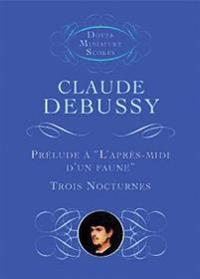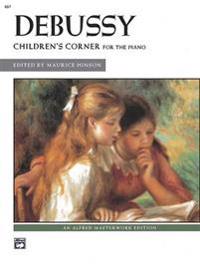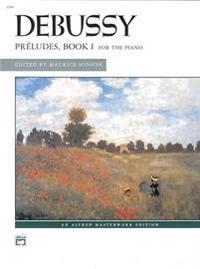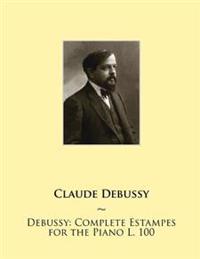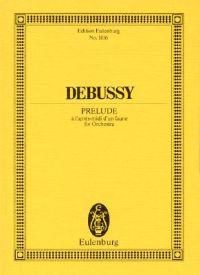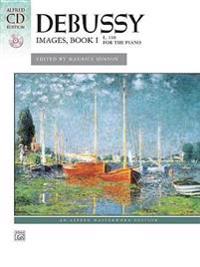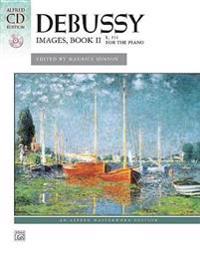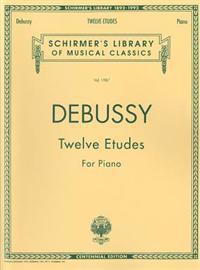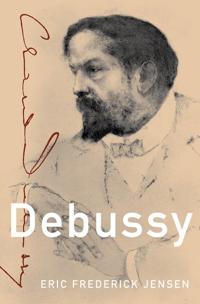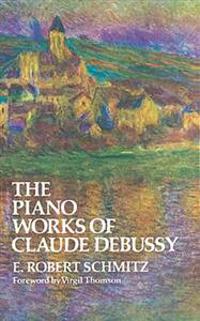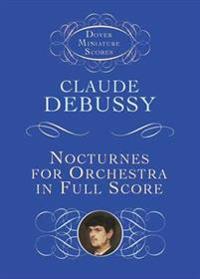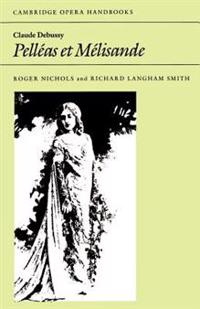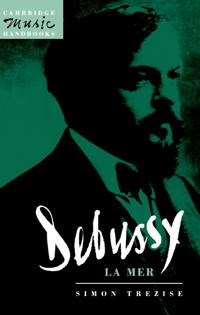Debussy -- Children's Corner: For the Piano
avClaude Debussy, Maurice Hinson
ISBN: 9780739014073 - UTGIVEN: 198510Debussy -- Preludes, Bk 1 (Okänt format)
avClaude Debussy, Maurice Hinson
ISBN: 9780739023242 - UTGIVEN: 1986-03Debussy: Children's Corner Suite for Piano [With CD (Audio)] (Okänt format)
avClaude Debussy
ISBN: 9780739098530 - UTGIVEN: 2013-06Debussy's six-movement suite for solo piano, Children's Corner (L. 113), was published in 1908. It is dedicated to Debussy's daughter, Claude-Emma (known as "Chou-Chou"), who was three years old at the time. The pieces are not intended to be played by children; rather they are meant to be evocative [...]
Debussy - The Ultimate Piano Collection: Schirmer's Library of Musical Classics Volume 2105 (Häftad)
avClaude Debussy
ISBN: 9781480332799 - UTGIVEN: 2014-03(Piano Collection). Contains nearly every piece of piano music Debussy wrote in this giant, 488-page, comb-bound book. Includes: Children's Corner, Deux arabesques, complete Etudes, Pour le piano, complete Preludes, Suite bergamasque, plus 27 other pieces.[...]
Debussy: Complete Estampes for the Piano L. 100 (Häftad)
avClaude Debussy, Samwise Publishing
ISBN: 9781508516484 - UTGIVEN: 2015-02Debussy Prelude A L'Apres MIDI D'Un Faune (Häftad)
avClaude Debussy
ISBN: 9783795761349 - UTGIVEN: 1985-09(Schott). Preface * Notice to the Original Edition
Images, Bk 1 (Häftad)
avClaude Debussy, Debussy, Maurice Hinson
ISBN: 9780739088166 - UTGIVEN: 2012-03Composed in 1905 this volume of Images, comprised of three contrasting pieces, demonstrates conciseness, deep dramatic content and colorful tonal imagery. Debussy established Impressionism as a pianistic style and used evocative terms to shed light on the mood or character of each piece. Maurice Hin[...]
Images, Bk 2 (Häftad)
avClaude Debussy, Debussy, Maurice Hinson
ISBN: 9780739088173 - UTGIVEN: 2012-03Composed in 1907 this volume of Images, comprised of three contrasting pieces, demonstrates conciseness, deep dramatic content and colorful tonal imagery. Debussy established Impressionism as a pianistic style and used evocative terms to shed light on the mood or character of each piece. Maurice Hin[...]
Twelve Etudes for Piano: Piano Solo (Häftad)
avClaude Debussy, Claude Debussy
ISBN: 9780793531585 - UTGIVEN: 1994-03Debussy's Legacy and the Construction of Reputation
ISBN: 9780190631222 - UTGIVEN: 2017-06Today, Claude Debussy's position as a central figure in twentieth-century concert music is secure, and scholarship has long taken for granted the enduring musical and aesthetic contributions of his compositions. Yet this was not always the case. Unknown to many concert-goers and music scholars is th[...]
Debussy (Inbunden)
avEric Frederick Jensen
ISBN: 9780199730056 - UTGIVEN: 2014-08Nearly one hundred years after the death of its composer, the music of Claude Debussy has lost none of its breadth of appeal. With the rare ability to entice listeners on many levels, at its heart lies an engaging simplicity-one which defies traditional analysis and lends mystery to what ultimately [...]
The Piano Works of Claude Debussy (Pocket)
avElie Robert Schmitz
ISBN: 9780486215679 - UTGIVEN: 1966-06Claude Debussy (häftad)
ISBN: 9780486227719 - UTGIVEN: 1972-11Deux Arabesques, Suite Bergamasque, Masque, Images and more.
Nocturnes for Orchestra in Full Score (Häftad)
avClaude Debussy
ISBN: 9780486445458 - UTGIVEN: 2005-07Described by the composer as a "study in gray painting," this three-movement work exemplifies the aural impressionism synonymous with Debussy's name. Shaded by his unique orchestral palette, three evocative scenes include the summer love of "Nuages," the celebration of "Fetes," and the seduction of [...]
Claude Debussy
ISBN: 9780521314466 - UTGIVEN: 1989-06The first comprehensive guide to Pelléas et Mélisande, Debussy?s only completed opera, this book is written by three of the leading authorities on French music of the period. As a background to the opera Richard Langham Smith discusses the play, by the Belgian dramatist Maeterlinck, and considers [...]
Debussy: La Mer (Häftad)
avSimon Trezise
ISBN: 9780521446563 - UTGIVEN: 1995-02La mer stands at the centre of Debussy?s achievement: described by the composer as ?a seascape without figures?, it is arguably the greatest and most original French symphony. In this study La mer is considered in the context of Debussy?s personal and musical development, and in the French musical r[...]
The Life of Debussy (Inbunden)
avRoger Nichols
ISBN: 9780521570268 - UTGIVEN: 1998-04-28A volume in the MUSICAL LIVES series on the life and music of Debussy. The author considers that the music, although superficially accessible, contains elements that are dangerous, unpredictable and destructive. He discusses the Sphinx-like qualities of the composer who asked riddles to which late[...]
The Cambridge Companion to Debussy (Häftad)
ISBN: 9780521654784 - UTGIVEN: 2003-06Often considered the father of twentieth-century music, Debussy was a visionary whose influence is still felt. This book offers a wide-ranging series of essays on Debussy the man, the musician and composer. It contains new insights into his character, his relationship to his Parisian environment and[...]
Debussy (häftad)
ISBN: 9780571330171 - UTGIVEN: 2019-04Claude Debussy was that rare creature, a composer who reinvented the language of music without alienating the majority of music lovers. He is the modernist everyone loves. How did he manage this? Was it through the association of his music with visual images, or was it simply that, by throwing out t[...]
Preludes - Books 1 and 2 (Häftad)
avClaude Debussy
ISBN: 9780634091254 - UTGIVEN: 2004-11(Piano). This is the ultimate source for these beloved piano preludes by Debussy, in a newly engraved and researched critical edition from Durand, the original publisher of this music. This is the paperback edition based on the hardbound Complete Works of Claude Debussy . Includes a foreword in Fren[...]

